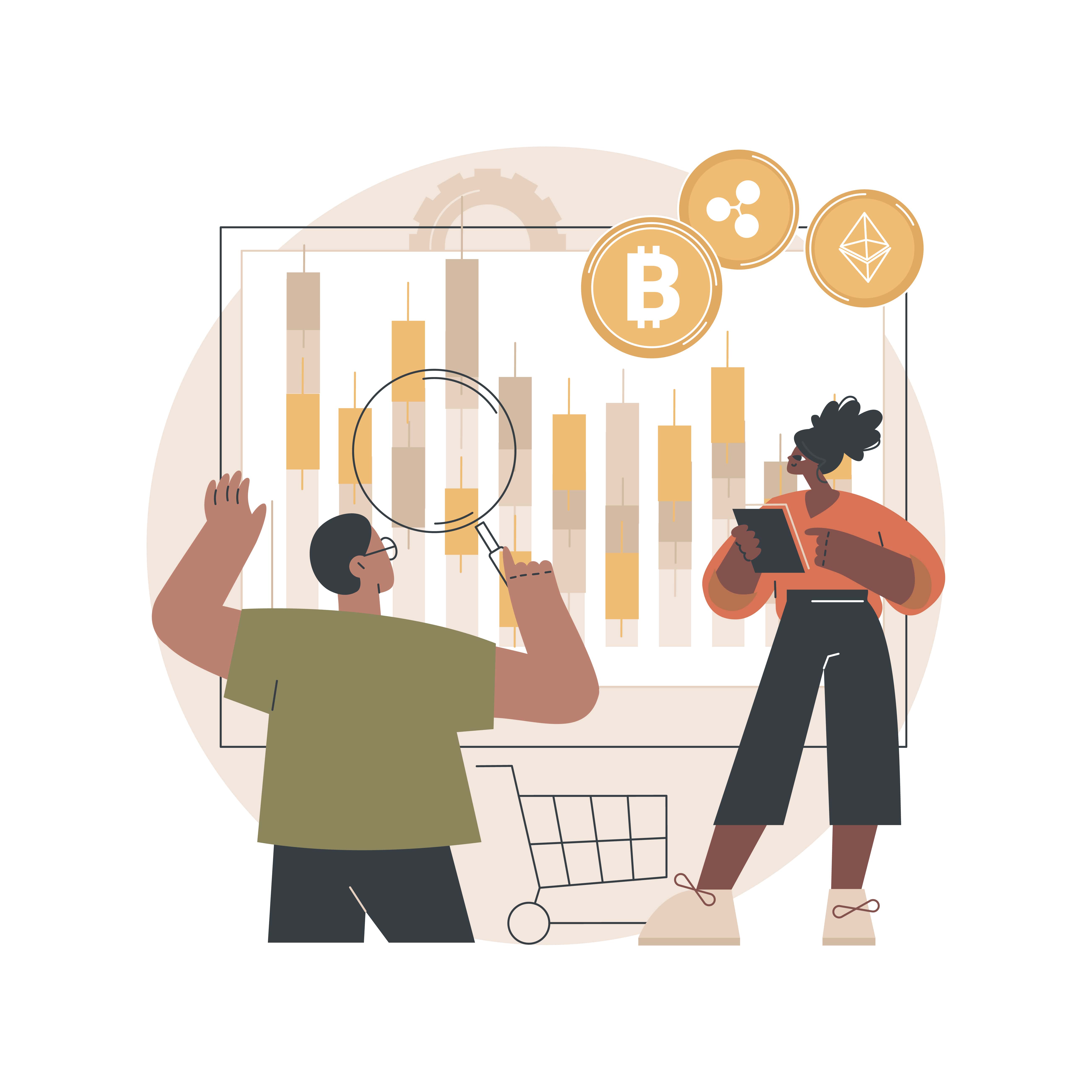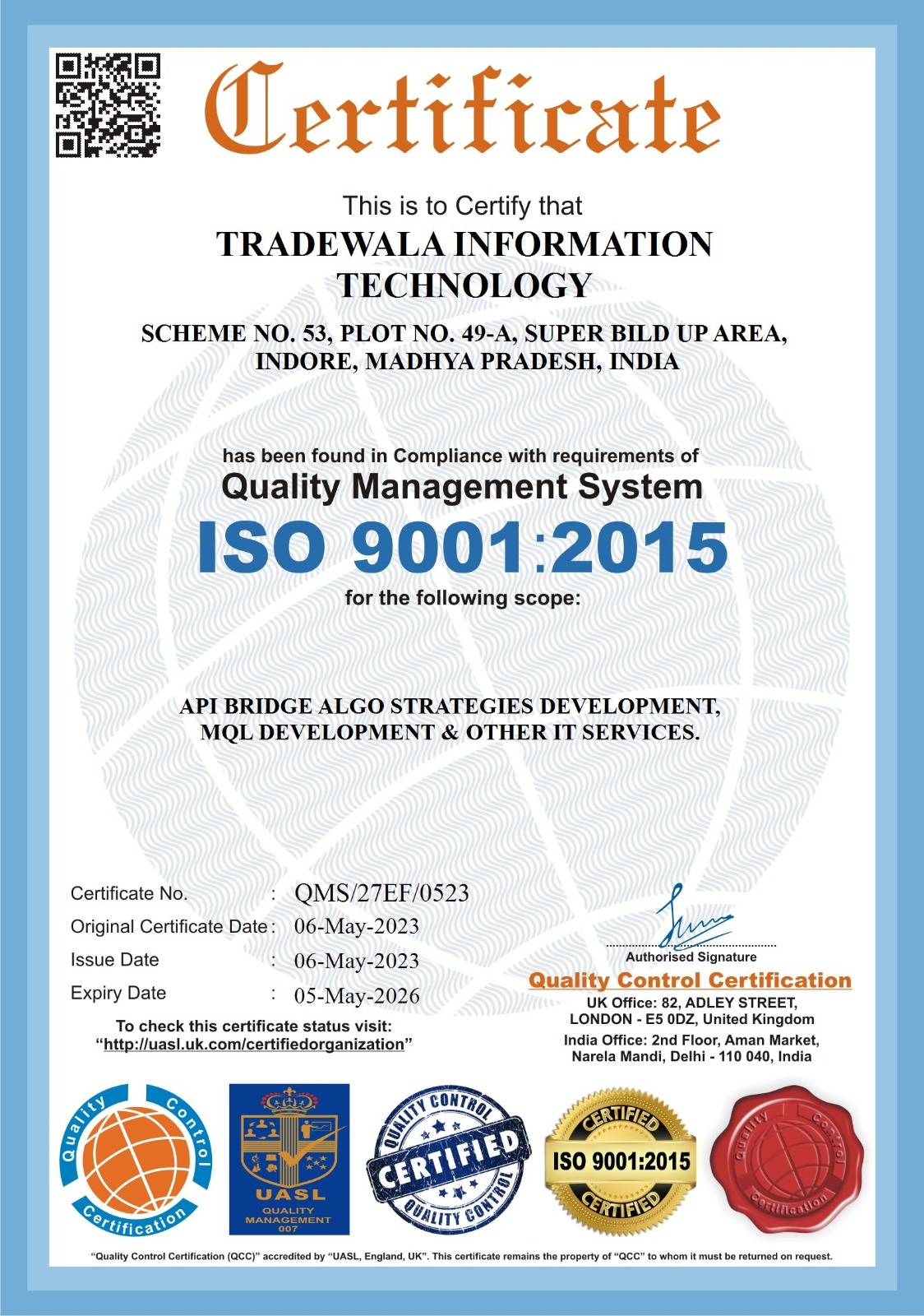What is algorithmic trading?
Algorithmic trading has revolutionized the way that traders can access the market. With AlgoTrading, traders can access the market faster and more accurately than ever before, allowing them to take advantage of opportunities and quickly react to changes in market conditions.
The speed and accuracy of AlgoTrading also eliminate the human emotions that can often affect trading decisions, reducing the risks of making mistakes from irrational decisions. AlgoTrading can be used on any exchange segment, from equities to commodities to foreign exchanges and even crypto exchanges.
With AlgoTrading, traders can enjoy faster, more accurate trading with reduced risk and higher profits.
How does it work?
Consider the example below:
- When a stock's 50-day moving average surpasses its 200-day moving average, buy 50 shares of the company. (A moving average is a calculation that takes the average of previous data points to smooth out daily price volatility and identify trends.)
- When the stock's 50-day moving average drops below the 200-day moving average, sell any shares you still have.
Algorithmic trading offers numerous benefits for traders, including increased speed, accuracy, and efficiency. By automating the trading process, algorithmic trading removes human emotion from the equation and allows traders to capitalize on opportunities quickly and accurately. Algorithmic trading also eliminates the need for manual monitoring of the stock market and makes it easy to place orders in the market with just a few clicks. By relying on an algorithmic trading system, traders can have confidence that their trades will be executed accurately and efficiently.
What are the various applications of algorithmic trading? For whom is
algorithmic trading useful?
- Mid- to long-term investors or buy-side firms – pension funds, mutual funds, insurance companies – use it to purchase stocks in large quantities when they do not want to influence stock prices with discrete, large-volume investments.
- Short-term traders and sell-side participants – market makers (such as brokerage houses), speculators, and arbitrageurs – benefit from automated trade execution; in addition, algo-trading aids in creating sufficient liquidity for sellers in the market.
- Systematic traders – trend followers, hedge funds or pairs traders (a market-neutral trading strategy that matches a long position with a short position in a pair of highly correlated instruments such as two stocks, exchange-traded funds (ETFs) or currencies) etc. – find it much more efficient to program their trading rules and let the program trade automatically.
How is it better than manual trading?
The typical workflow of a trader when trading manually is as follows.
- Searching for a trade signal in accordance with your strategy when looking at charts, quotations, or news.
- Filling up the order information after discovering a trade signal (cash time! Yay!)
- Keeping an eye on your deals to determine if they hit their aim or, more frequently than not, went the other way
- closing holdings in order to minimize losses or book gains
All of these jobs must be completed right away and precisely. even simultaneously, on occasion. Furthermore, it is very challenging to manage both if the trader wants to test or use another method. In these situations, algorithms handle all of the labor-intensive aspects of carrying out these operations.
What are the advantages of algorithmic trading?
- Faster & more accurate: Algos can track even a small change in prices & execute orders faster than humans can.
- Processes large amounts of data: Suppose a trader needs to track 1 minute of data for 10 stocks. Doing this manually has a very high risk of error. Using algorithms completely eliminates the risk. Algorithms can also be programmed to process multiple indicators for multiple assets without any loss of accuracy.
- Eliminates human biases & sentiments: Algorithms will follow the instructions given, without allowing any bias or sentiment to influence trading decisions.
- Allows for multitasking: Algorithms can constantly run & execute orders according to given instructions, without any manual intervention. This means that traders can be free to create more strategies, take breaks or spend time doing other things.
What are the disadvantages of AlgoTrading?
- Algo systems operate very quickly. Therefore, if a position experiences a loss, the cumulative losses could be significant. By taking the proper risk management steps, this risk can be reduced.
- These structures are rigid. They will function exactly how you direct them. Thus, the algo would also need to be modified if the market dynamics changed.
Are any permissions required for algo trading?
According to the rules, your broker must obtain authorization on your behalf; as a retail trader, you are not permitted to travel to the exchange and do so.
What are the different type of executions possible ?
Paper Trading: Paper trading, also known as simulated trading, enables investors to buy and sell stocks without putting their own money at risk.
Live – Offline: Presume that your broker does not have algo activated. Not to worry. We will contact you or your broker utilizing a wide range of communication channels (WhatsApp, email, SMS, voice call) once the strategy is ready to take a trade. After then, the rest is up to you and your broker to handle any way you feel comfortable.
Live – Auto one-click: Every step of the process is under your control, and you can decide to execute these deals only once you confirm them with a single click.
Live – Fully Auto: Your strategy will be executed automatically without seeking any confirmation from you.

Benefits of Algorithmic Trading
The benefits of algorithmic trading are as follows:
- Trades are carried out at the best price possible.
- Trades are arranged quickly and accurately, with a high likelihood that they will be executed at the intended level.
- Trade is executed as soon as possible to prevent price changes.
- Low cost per transaction.
- Automated tests running simultaneously on various market situations.
- Low possibility of human error when placing orders.
- To determine whether the trading strategy is viable, the method can be backtested utilizing available historical and real-time data.
- Less human intervention means a lower chance of error. While algorithmic trading is not affected by emotional or psychological factors, human traders frequently are.
Strategies in Algorithmic Trading
Every algorithmic trading strategy needs a profitable opportunity to be found in terms of increased earnings or cost savings.
The most popular trading algorithms are listed below;
1. Trend Following Strategy
The most popular trading approach is the trend.
Moving averages, breakouts, shifting price levels, and other trends are used. Given that there is no need for price prediction, this is the easiest technique to put into practice.
Trades are completed based on a well-liked trend that is simple and easy to apply. For instance, the most frequently utilized trends are the 30-day, 50-day, and 200-day moving averages.
2. Index Fund Rebalancing Strategy
The rebalancing period for index funds is predetermined.
This assists in keeping the holdings in line with the relevant benchmark indices. Algorithmic traders will benefit from this strategy.
The traders frequently take advantage of anticipated trades that, depending on the number of stocks in the index prior to rebalancing, offer profits of between 25 and 75 basis points.
3. Mathematical Model Based Strategy
Some models, like delta-neutral, permit trading on a mix of options and the underlying security.
For inexperienced readers, a portfolio strategy known as "delta neutral" consists of investments that balance the positive and negative delta. The ratio used to compare an asset's price change to its associated derivative is called the delta.
4. Mean Reversion
The aforementioned technique is founded on the idea that an asset's high and low prices are transient, returning to the mean value over time. The main step in implementing the algorithm in this method is to identify and specify the pricing range.
5. Volume-Weighted Average Price (VWAP)
Using the historical volume profile for each stock, the approach divides a huge order into smaller portions and releases them. When executing the order, it aims to do so near the volume-weighted average price (VWAP).
6. Time-weighted Average Price (TWAP)
Using equally spaced time periods between a start and an end time, the approach releases a smaller portion of a larger order. The goal of the approach is to execute the order at or near the midpoint between the start and end prices.
7. Percentage of Volume (POV)
According to the specified participation percentage and volume traded in the market, the algorithm in the strategy sends partial orders.

